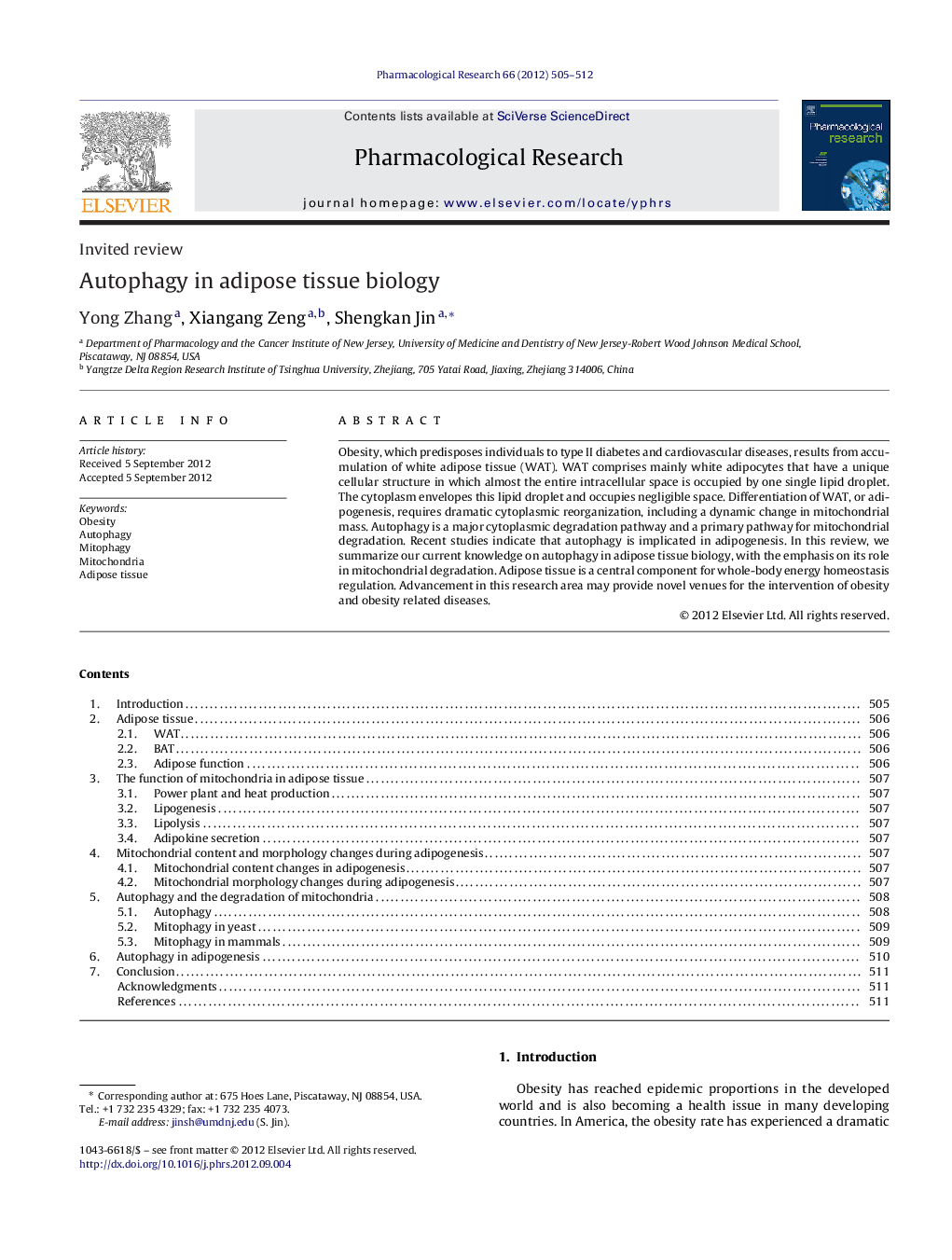| Article ID | Journal | Published Year | Pages | File Type |
|---|---|---|---|---|
| 2561451 | Pharmacological Research | 2012 | 8 Pages |
Obesity, which predisposes individuals to type II diabetes and cardiovascular diseases, results from accumulation of white adipose tissue (WAT). WAT comprises mainly white adipocytes that have a unique cellular structure in which almost the entire intracellular space is occupied by one single lipid droplet. The cytoplasm envelopes this lipid droplet and occupies negligible space. Differentiation of WAT, or adipogenesis, requires dramatic cytoplasmic reorganization, including a dynamic change in mitochondrial mass. Autophagy is a major cytoplasmic degradation pathway and a primary pathway for mitochondrial degradation. Recent studies indicate that autophagy is implicated in adipogenesis. In this review, we summarize our current knowledge on autophagy in adipose tissue biology, with the emphasis on its role in mitochondrial degradation. Adipose tissue is a central component for whole-body energy homeostasis regulation. Advancement in this research area may provide novel venues for the intervention of obesity and obesity related diseases.
Graphical abstractFigure optionsDownload full-size imageDownload high-quality image (126 K)Download as PowerPoint slide
